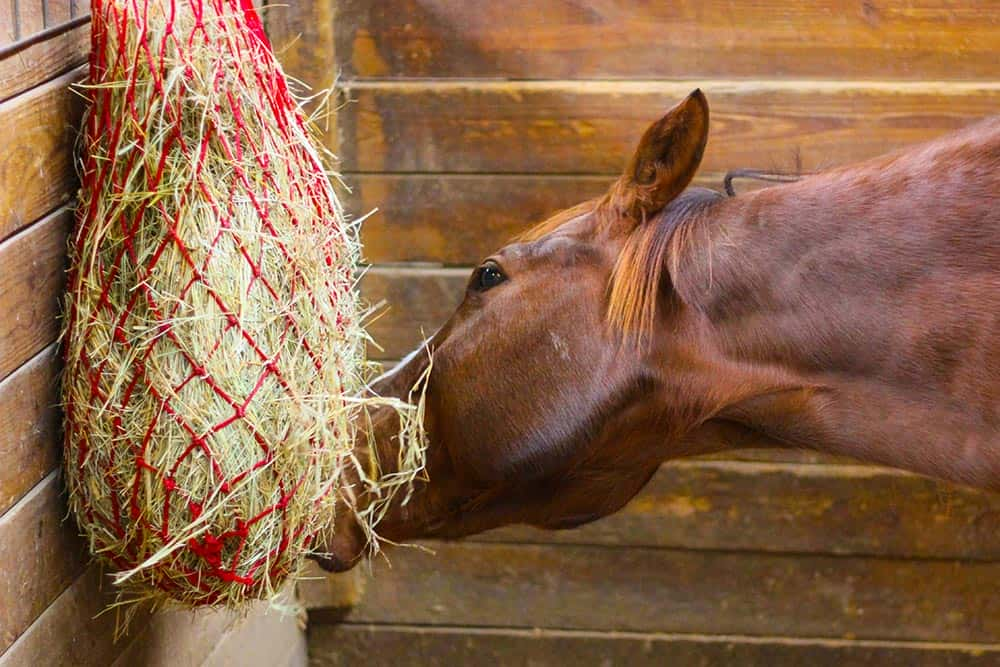Horses should consume about 2% of their bodyweight with hay per day.
To work out 2% of your horse’s body weight, you will first need to find out how much your horse weighs. Let’s say your horse weights 500kg. You would work out 2% of 500 as follows:
Divide 2 by 100 which equals 0.02. Then multiply your answer by 500, 0.02 x 500 = 10.
Therefore, if your horse weighs 500kg, you would need to feed your horse 10kg of hay.
Factors to consider
How much grass your horse is consuming
When your horse is grazing during the day, he will be adding grass to his daily food consumption, and it is important to take this into account. Research has shown that a horse grazing for nine hours a day will eat around 0.6 kg of grass an hour which totals to 2.7kg of forage.
Working on this calculation, a 500kg horse will need around 3kg of hard feed and 7kg of hay during winter months when many fields are bare and the grass available has little nutritional value. If your horse is only turned out for a few hours, it may be worth disregarding their grass intake, especially if it is limited or of inadequate quality.
A horse’s lifestyle
All horses have their own individual needs and idiosyncrasies, and your feed calculations should take them into account. Their age, workload, exercise regime, health and condition will all have influence on what and how much to feed your horse.
The weight of your hay net
If you do not already weigh your hay, now is the time to start – you will be surprised at how heavy your net is. To ensure your hay lasts the night, try dividing the hay between a few hay nets strategically placed around his stable – which will also keep him moving around. Use small hole hay nets and double them up to slow down his eating and keep him occupied for longer.
Risks associated with overfeeding a horse with hay
Over fed horses can lead to a host of physical problems. These can be anything from excess weight contributing to degenerative joint disease to equine metabolic syndrome (a disorder linked with the inability to regulate blood insulin levels) and laminitis (a condition that affects the tissues bonding the hoof wall to the pedal bone in the hoof).
Some horses develop hay belly, especially if they eat a large volume of lower quality feed.
While you can use these calculations and considerations to work out roughly how much hay to feed your horse, you understand your horses needs the most and should contemplate their health needs and lifestyle to decide exactly how much you give them.
If a new stable or field shelter is on your agenda, you know where we are. We understand the importance of providing a warm, comfortable, and quality made shelter for your beloved horse, so if you need an expert in the field, we are only a phone call away 01233 515828.

Get in touch
Want to know more about choosing low-cost, high-quality stables? We’re happy to answer all your questions. Call 01233 884502, email info@nationalstables.co.uk or send us a message and we will respond ASAP.





